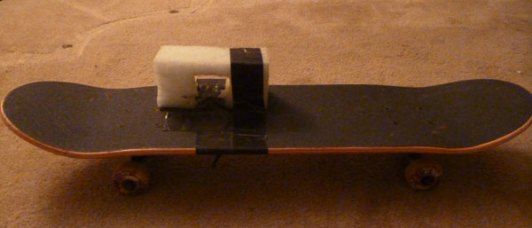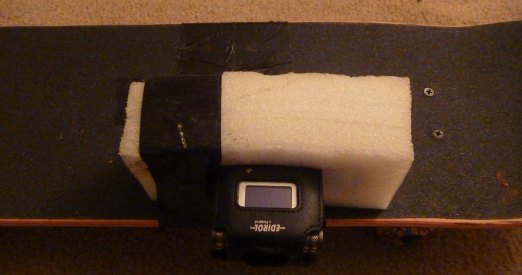Undoubtedly, one of the most enjoyable, fun aspects of being a sound designer is field and foley recording.
Perhaps one of the fondest memories of my career was when I was working for Konami in Hawaii. We were doing a PS2 game called Ys VI: The Ark of Naphishtim in which there was a cutscene with a huge pirate ship battle. There were a lot of cannonball blasts and splashes, so to get some good cannonball impact sounds, myself and the other sound designers, Jaren Tolman and Stillwind Borenstein headed over to the leeward side of the island where I proceeded to jump off a concrete pillar into the middle of the Pacific Ocean while Jaren held the Rycote blimp on a boom extended out over me and Stillwind ran the session on his laptop. We couldn’t believe we were getting paid to do this!
More recently I was working on a skateboarding game. Unfortunately, due to circumstances far beyond our control, it never saw the light of day. However it was another fun project that afforded me the opportunity to experiment with and record a variety of sounds in a realistic fashion that ended up sounding great in the game.
When we were first approached with the project, I instantly started thinking about how to get some good skateboarding sounds. Do I hire a pro and follow him around with a boom and a blimp? Is there a way I could somehow record all the necessary sounds myself? Being that this was a start-up, we had no budget for hiring anyone, nor did I have such necessary equipment at that time like a blimp or even a decent field recorder. So I opted to try some experiments with a DIY rig to see if I could make some quality sounds on the cheap. For recorders I had an Edirol R-09 and a Zoom H2. I opted for the Zoom because, while the preamps aren’t as good as the Edirol, it was also one-fourth the price, so if it got destroyed, which seemed likely, I wouldn’t be as pissed. To capture the sounds, I wanted to affix the recorder to the board, but needed a method that wouldn’t cause noise. I started with a piece of foam I found, that I believe came from a hard drive package. I cut out a hole to wedge the recorder into and duct taped it to the board. Ghettotastic!

And the results turned out really well! While I can’t show off the game for legal reasons, here’s what the audio content, all recorded in this method, sounded like:
Now, I’m no pro skater, so the only times I was actually riding the skateboard was to capture all the rolling sounds and a few of the ollies and landings. Most of the ollies, landings, power slides, bails, etc., were all recorded with the recorder firmly tucked into the foam and me “simulating” the movements as if it were a giant finger board. I would apply ample pressure so it sounded like there was some mass on the board and eq things when designing the actual sounds. But every skateboarding sound you hear was captured with the skateboard above and that magic piece of foam.
